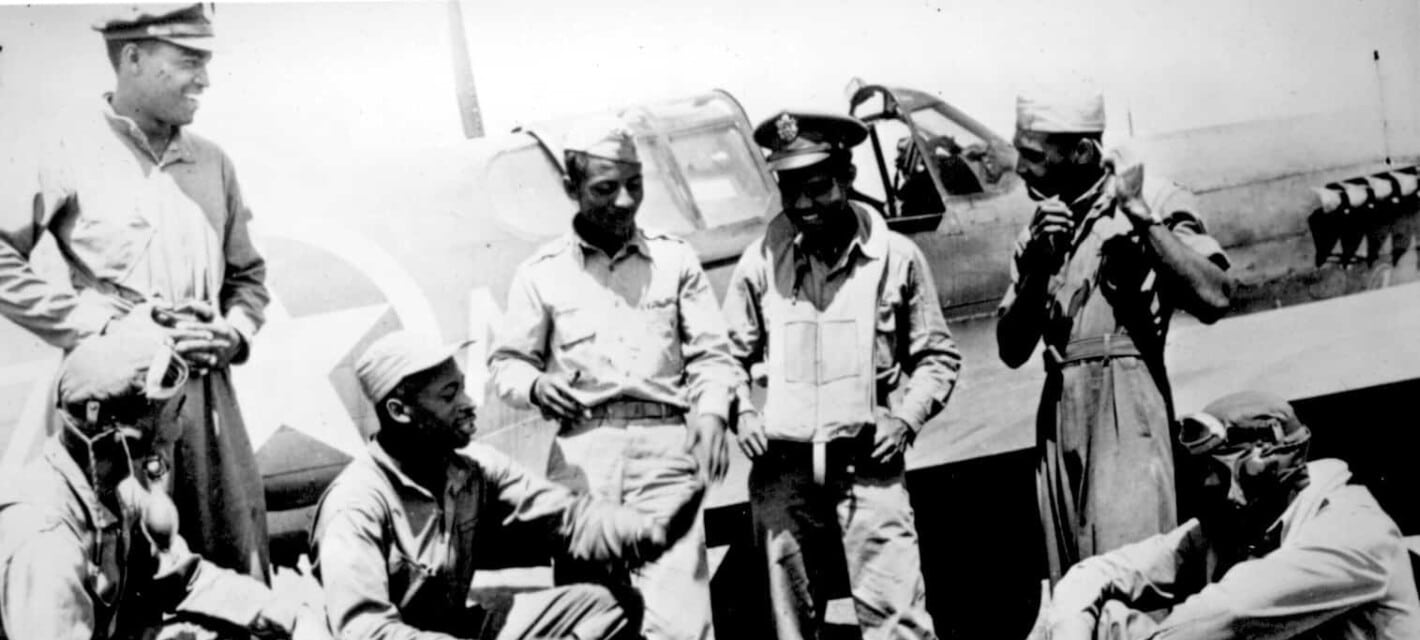As a general proposition, you would expect a fighter ace – a pilot who downed at least five airplanes – to get officially credited only with shooting down enemy aircraft. Yet, in World War II, an American ace shot down an American airplane – not by accident but deliberately – and was officially credited with that shoot down. Below are thirty things about him and other heroic American airmen of WWII.

30. The American Ace Who Downed an American Airplane, and Was Credited With the Victory
The above picture shows American ace Louis Edward Curdes in his P-51 Mustang. On the fuselage below the cockpit is a painted display of his victories, each marked with a flag or emblem that denotes the downed plane’s nationality. There are swastikas for shot down German airplanes, a fascist roundel for a victory over an Italian aircraft, and a Rising Sun for a downed Japanese airplane. However, there is an oddity that stands out: an American flag, denoting that one of Curdes’ victories was over an American airplane. How did that come about?

Curdes was born in Indiana in 1919, and when America joined WWII, he was a third year engineering student at Purdue. He dropped out to join the US Army Air Forces, and was sent to the Mediterranean Theater in March, 1943. There, he was assigned to the Twelfth Air Force’s 95th Fighter Squadron, 82nd Fighter Group. Curfdes flew a P-38 Lightning, and on his first combat mission on April 29th, 1943, he shot down three German Messerschmitt Bf 109s in Tunisia. Three weeks later, he became an ace when he shot down two more over Sardinia. That June, he added an Italian fighter. He downed two more German 109s, but immediately after his eighth victory, he was himself shot down near Rome. Curdes was captured and thrown into an Italian POW camp, but as seen below, he did not stay there for long.

